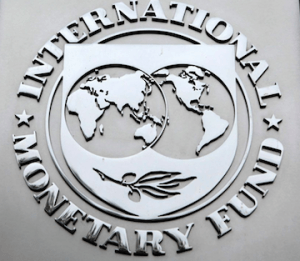Growth in sub-Saharan Africa lower than earlier expected – IMF
 The International Monetary Fund (IMF) updated World Economic Outlook (WEO) released today shows growth in sub-Saharan Africa would be lower than expected in the April 2019 forecast.
The International Monetary Fund (IMF) updated World Economic Outlook (WEO) released today shows growth in sub-Saharan Africa would be lower than expected in the April 2019 forecast.
According to the IMF, in sub-Saharan Africa, growth is expected at 3.4 per cent in 2019 and 3.6 per cent in 2020, 0.1 percentage point lower for both years than in the April WEO, as strong growth in many non-resource-intensive countries partially offsets the lackluster performance of the region’s largest economies.
It however, noted that higher, albeit volatile, oil prices have supported the outlook for Angola, Nigeria, and other oil-exporting countries in the region.
“But growth in South Africa is expected at a more subdued pace in 2019 than projected in the April WEO following a very weak first quarter, reflecting a larger-than-anticipated impact of strike activity and energy supply issues in mining and weak agricultural production,” it said.
The IMF indicates that growth in the Middle East, North Africa, Afghanistan, and Pakistan region is expected to be 1.0 per cent in 2019, rising to about 3.0 percent in 2020.
“The forecast for 2019 is 0.5 percentage point lower than in the April WEO, largely due to the downward revision to the forecast for Iran (owing to the crippling effect of tighter US sanctions). Civil strife across other economies, including Syria and Yemen, add to the difficult outlook for the region. Partially offsetting these developments are improved prospects for Saudi Arabia’s economy—the non-oil sector is expected to strengthen in 2019 with higher government spending and improved confidence, and in 2020 with an increase in oil sector growth,” it said.
The forecast global growth remains subdued, the Fund said.
It states that since the April World Economic Outlook report, the United States further increased tariffs on certain Chinese imports and China retaliated by raising tariffs on a subset of US imports. Additional escalation was averted following the June G20 summit.
According to the IMF, global technology supply chains were threatened by the prospect of US sanctions, Brexit related uncertainty continued, and rising geopolitical tensions roiled energy prices.
The Fund is of the view that against this backdrop, global growth is forecast at 3.2 per cent in 2019, picking up to 3.5 per cent in 2020 (0.1 percentage point lower than in the April WEO projections for both years). GDP releases so far this year, together with generally softening inflation, point to weaker-than anticipated global activity. Investment and demand for consumer durables have been subdued across advanced and emerging market economies as firms and households continue to hold back on long-term spending.
“Accordingly, global trade, which is intensive in machinery and consumer durables, remains sluggish. The projected growth pickup in 2020 is precarious, presuming stabilization in currently stressed emerging market and developing economies and progress toward resolving trade policy differences,” it said.
By Emmanuel K. Dogbevi
Copyright ©2019 by Creative Imaginations Publicity
All rights reserved. This article or any portion thereof may not be reproduced or used in any manner whatsoever without the express written permission of the publisher except for the use of brief quotations in reviews.
